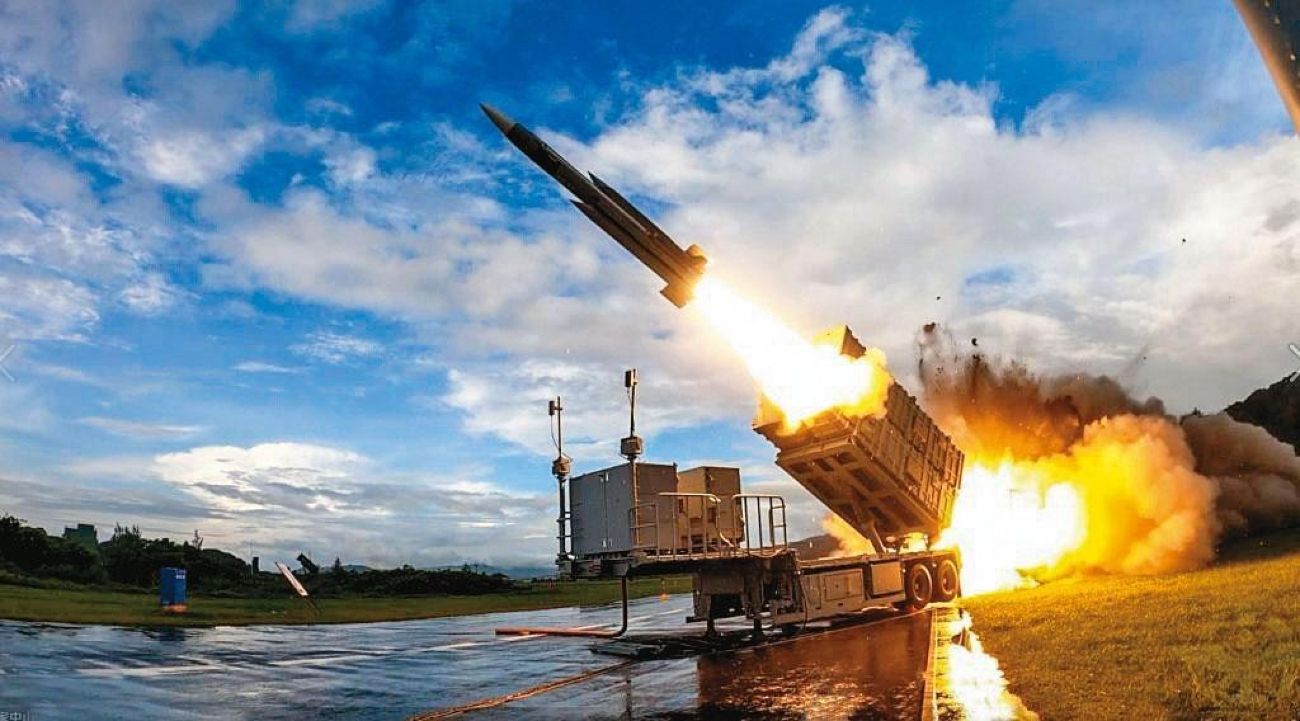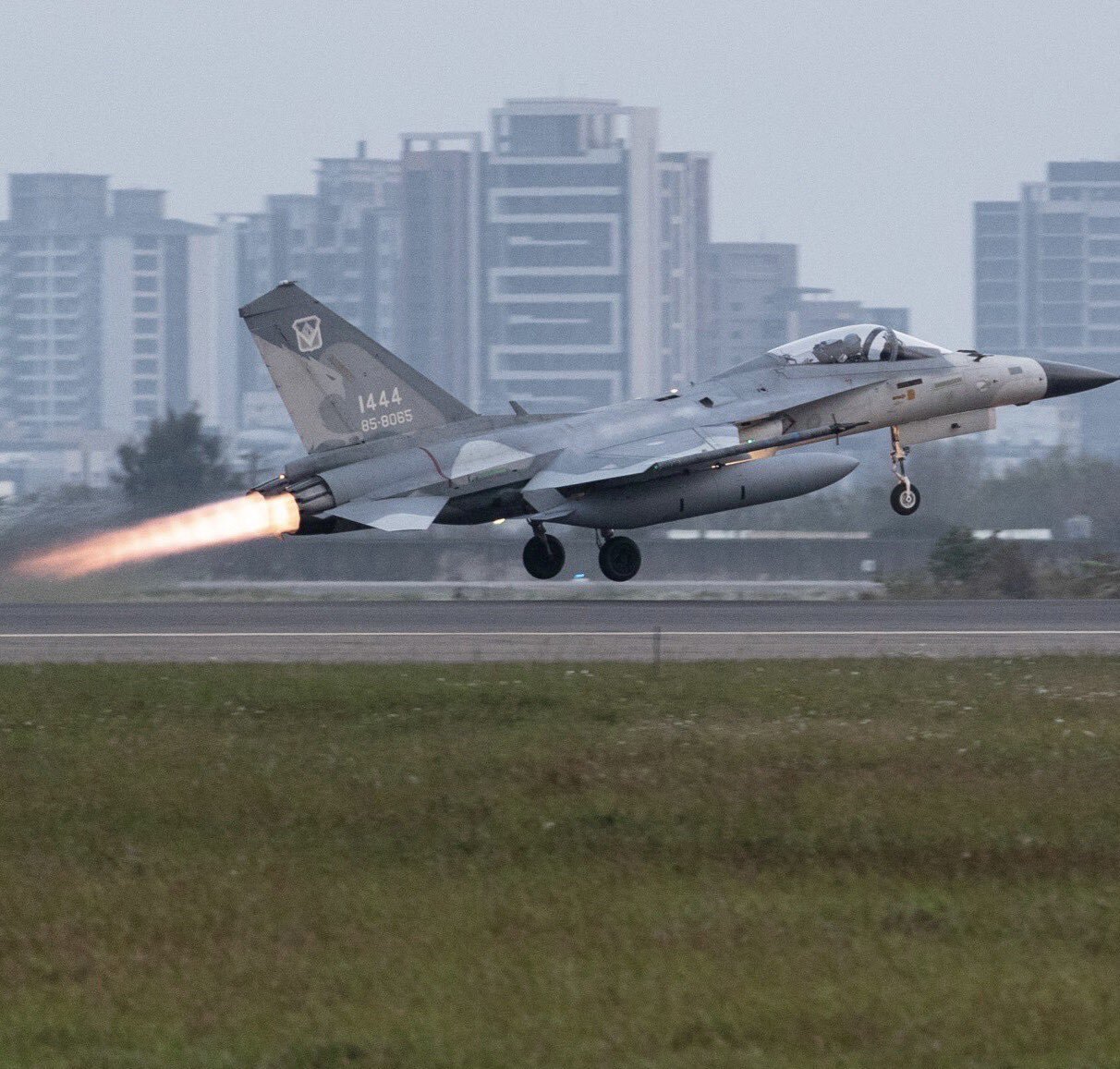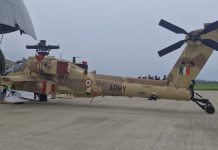The Taiwan Air Force is examining whether its homegrown Indigenous Defense Fighter (IDF) F-CK-1 can fire an air-launched version of another domestic product – the Hsiung Feng III (HF-III) anti-ship missile (AShM).
While the IDF has been found to possess suitable aerodynamic characteristics and kinematic performance for firing the missile, the missile itself must be tweaked and modified to be operated by the fighter.
Reports from the island have called the study an “operational evaluation,” where the target is People’s Liberation Army Navy (PLAN) warships heading towards and eventually surrounding the island. The PLAN would be the lead arm of a Taiwan operation, targeting the island’s warships, hitting land targets, and transporting men and material for an amphibious landing.
Taiwan’s Leading Warship Killer
The Hsiung Feng II and III missiles are the Republic of China (RoC) Navy’s most advanced and the mainstay of their anti-shipping arsenal.
In mid-September, the Republic of China Navy (RoCN) conducted an exercise involving the HF-II, HF-III, and a US-made Harpoon anti-ship missile (AShM), where videos showed them hitting target vessels. Pictures showed three holes punched in the retired warship used for target practice.
Early in July, Taiwan’s Ministry of National Defense (MND) announced hiking production of its homegrown AShM platforms, according to a report in the Taipei Times, which includes the HF-III, an extended-range variant of the HF-II.

HF-III To Be Operated From F-CK-1
According to Taiwan News, the IDF F-CK-1 possesses “flight speeds” with the “initial velocity for launching the missiles.” However, the missile is rather heavy, at 1,500 kilograms, while the IDF can carry a maximum payload of 4,000 kg.
Presumably, this comes close to the weight-carrying capacity of the IDF and, possibly, structural stress on the airframe. Thus, the report quotes unnamed Taiwanese defense officials detailing the changes being made to the missile.
“To alleviate the weight burden, two boosters originally outfitted on the Hsiung Feng III missiles have been removed, and the missile body has been moderately downsized and reduced in weight,” the report added. The missile weighs 1,300 kg minus the two boosters.
The standard range of the Hsiung Feng III missile is 150 kilometers, while the air-launched version has an estimated range of approximately 120 km. Reports also suggest that the IDF is undergoing “upgrades” to enhance its “performance radius.”
The boosters help the missile to rapidly accelerate after launch, especially when launched from land to take off against gravity. The resulting high kinetic force has other benefits when striking a ship. This ability would be compromised when the boosters are reduced, which is a factor RoCN planners must consider.

F-CK-1 Would Have Other Missions Too?
While the missile’s weight “falls within the IDF’s payload range,” developers are still “striving to downsize and reduce the weight of the missile even further.” Given its small numerical size, a possible reason could be that the RoCN Air Force cannot afford the IDF to be reserved solely for maritime strike roles.
In other words, while flying such missions, the fighter might also be armed with medium and long-range air-to-air missiles (AAM) for Combat Air Patrols (CAP) or point defense roles.
An IDF carrying an unmodified air-launched HF-III, AAMs, and external fuel tanks might potentially breach its payload capacity. This is speculation at best since the reports themselves claim that even at the current weight, the HF-III can still be launched from the IDF.
Liberty Times, however, identified the secondary role – which is driving the weight reduction efforts of the HF-III for both functions to be performed – as a standoff ground strike.
It said if the IDF was armed with two Wan Chien air-launched cruise missiles (each weighing 800 to 900 kg mounted on the middle pylon on each wing), there would be “difficulties to overcome.” A photo shows the HF-III being mounted on the centerline belly.
The missile, meanwhile, will enhance the IDF’s “long-range precision attack capabilities against large Chinese vessels” and serve as a “deterrent” against potential military threats from China. “Much of the ongoing efforts of the missile’s development are focused on fine-tuning,” the official added.
Taiwanese defense officials, however, have indicated that the program is strictly experimental and far from being an operationalized platform. An official said, “There will be good news,” when Liberty Times asked if the combat evaluation had been completed and if mass productions would begin soon.
- The author can be reached at satamp@gmail.com
- Follow EurAsian Times on Google News




